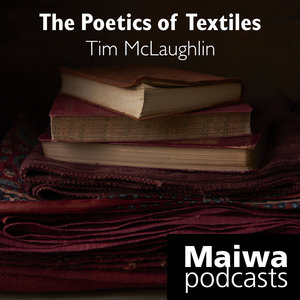The Maiwa Guide to Natural Dyes
What they are and how to use them

Proper scouring is absolutely essential to good dyeing. Improperly scoured items do not dye evenly, the dye does not penetrate well, and the dyed item may not be fast.
Most fibres come from nature with coatings of some type. If these are not removed the dye will attach to the coating rather than to the fibre. This may not be immediately evident but over time the adjunct will separate from the fibre taking the colout with it. It is a common error to doubt the fastness or the quality of the dye when the real culprit is a freeloader who stole the dyestuff. It is best to remove all foreign matter at the beginning and start with clean fibres.
Note: Fabrics sold as “ready for dyeing” may not need scouring.
Supplies:
Soda ash and Neutral Soap (Synthrapol) for cotton.
Orvus paste soap (for silk and wool)
Scouring cotton and other cellulose fibres:
1 Use a large vessel and fill with enough water so that the yarn or fabric may be well covered and not crowded.
2 Add 1 tsp Synthrapol (5 ml) and 4 tsps. soda ash (20 g) for each half-pound (250 g) of cotton.
3 Simmer for approximately 1 hour. Cotton is full of wax, pectic substances, and oil, all of which must be removed. The resulting wash water will be yellow brown. Bleached white cotton yarns and fabrics may not need as long.
Scouring silk and wool:
1 Use a large vessel and fill with enough water so that the yarn or fabric may be well covered and not crowded.
2 Add 1 tsp (5 ml) orvus paste soap for each pound (500 g) of dry fibre/fabric.
3 Add yarn, fleece or piece goods and heat gently (60º C, 140º F) for approximately 1 hour. Turn gently but do not agitate
4 Allow fibre to cool down slowly and then rinse in warm water. Remember overheating or sudden temperature changes will cause wool to felt.
Notes:
What they are and how to use them

Proper scouring is absolutely essential to good dyeing. Improperly scoured items do not dye evenly, the dye does not penetrate well, and the dyed item may not be fast.
Most fibres come from nature with coatings of some type. If these are not removed the dye will attach to the coating rather than to the fibre. This may not be immediately evident but over time the adjunct will separate from the fibre taking the colout with it. It is a common error to doubt the fastness or the quality of the dye when the real culprit is a freeloader who stole the dyestuff. It is best to remove all foreign matter at the beginning and start with clean fibres.
Note: Fabrics sold as “ready for dyeing” may not need scouring.
Supplies:
Soda ash and Neutral Soap (Synthrapol) for cotton.
Orvus paste soap (for silk and wool)
Scouring cotton and other cellulose fibres:
1 Use a large vessel and fill with enough water so that the yarn or fabric may be well covered and not crowded.
2 Add 1 tsp Synthrapol (5 ml) and 4 tsps. soda ash (20 g) for each half-pound (250 g) of cotton.
3 Simmer for approximately 1 hour. Cotton is full of wax, pectic substances, and oil, all of which must be removed. The resulting wash water will be yellow brown. Bleached white cotton yarns and fabrics may not need as long.
Scouring silk and wool:
1 Use a large vessel and fill with enough water so that the yarn or fabric may be well covered and not crowded.
2 Add 1 tsp (5 ml) orvus paste soap for each pound (500 g) of dry fibre/fabric.
3 Add yarn, fleece or piece goods and heat gently (60º C, 140º F) for approximately 1 hour. Turn gently but do not agitate
4 Allow fibre to cool down slowly and then rinse in warm water. Remember overheating or sudden temperature changes will cause wool to felt.
Notes:
- Some fleece sold as scoured has also been oiled to facilitate spinning - it will need to be scoured again.
- Fleece and wools need to be scoured to remove natural oils (lanolin) and dirt.
- Silks require scouring to remove sericin - the coating of the fibre that held it into a cocoon.
- Cotton and other plant fibers require scouring to remove waxes and pectins.
- In all cases anything that comes between the dye and the fibre will create an unwanted resist.
 |
| Comparison of unscoured cloth (left) and scoured cloth (right). One piece of fabric was torn in half - everything other than scouring was the same. |























































